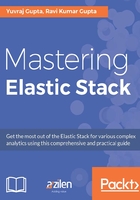
Features of Logstash
Among the various features of Logstash, we will have a look at the key features that differentiate Logstash other log management tools:
- Open source: Logstash is completely free to use and is an open source tool whose source code is available freely on GitHub.
- Seamless integration with Elasticsearch, Beats, and Kibana: This is a powerful data processing pipeline which is tightly coupled to fetch data from multiple systems using Beats, store the data for real-time search capabilities in Elasticsearch, and visualize the stored data using Kibana.
- Extensibility: Logstash provides a variety of inputs, filters, and outputs to use for processing logs of different types. It provides flexibility to create and develop inputs, filters, or outputs for Logstash, which are easy to create and developer-friendly.
- Interoperability: Logstash provides the interoperability to use it with various other components and tools. Logstash can fetch data from various different tools and output the data into various different tools, making it easier to use Logstash as part of a complex workflow.
- Pluggable data pipeline architecture: Logstash contains over 200 plugins developed by Elastic. and the community which can be used. Logstash is designed as a generic framework wherein you mix and match the inputs or filters or output and it will process the data accordingly. It uses a format of configuration file to use various plugins.
It is the crux and the heart behind the architecture of Logstash as it provides greater flexibility. To understand it better, let's take a look at the following example:
Suppose there is a new tool or software that you use to store data. Logstash currently doesn't support an output connector to store your data in that. Having a pluggable architecture, you can easily develop a plugin wherein you write a piece of code to store data in the required tool using a set of parameters. After creating a plugin, you can use that plugin directly in Logstash. Without a need to go through the Logstash source code, you have easily developed a plugin, which has extended Logstash, and you can leverage its processing capabilities.